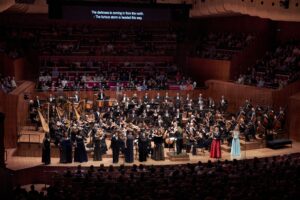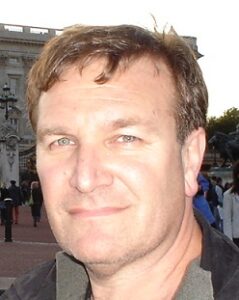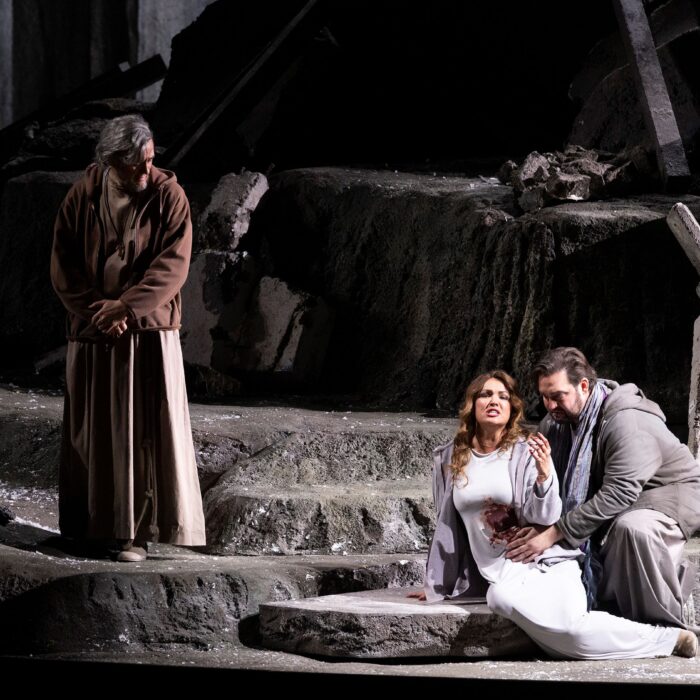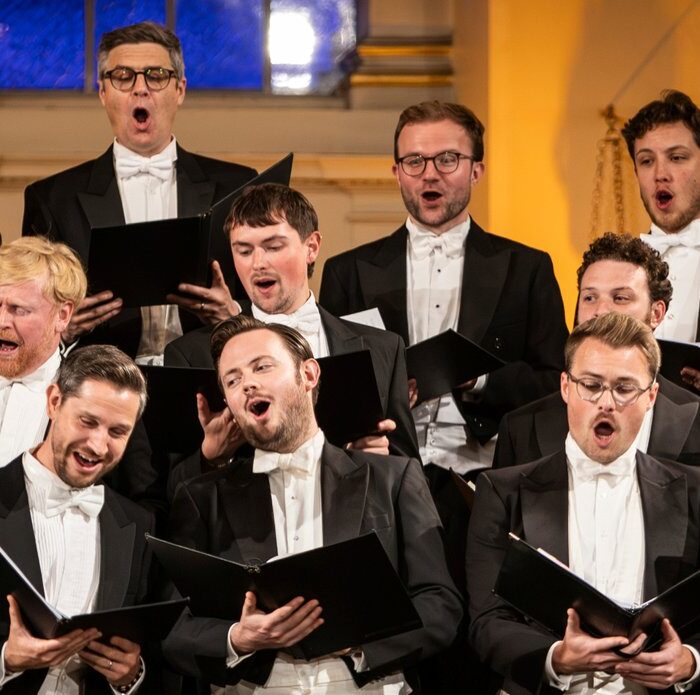
Sydney Symphony Orchestra 2024-25 Review: Die Walküre
By Gordon WilliamsImage courtesy of Sydney Symphony Orchestra. Photo by Jay Patel.
With “Die Walküre,” the second opera of Richard Wagner’s four-opera “Ring” cycle, the epic plot comes down to the human level, having begun in the first opera, “Das Rheingold,” in the realm of gods (albeit flawed), Rhinemaidens, giants, and other immortals.
This November 15 and 17’s performances of “Die Walküre” in the Sydney Opera House Concert Hall saw the Sydney Symphony Orchestra present the second instalment of their four-year concert presentation of Wagner’s epic drama under the baton of Chief Conductor Simone Young, the Australian conductor of this year’s Bayreuth “Ring” in the German summer. It was a promising intensification of the Sydney orchestra’s impressive presentation last year of “Das Rheingold.”
This was a beautifully-conceived interpretation. ‘Luminous’ is a word that has been used to describe it. Yes, the story was exceptionally clear, even in concert format, but there was abundant evidence of Young’s desire to ‘keep the symphonic colors without overpowering the voices,’ as she has said elsewhere.
The general public’s perception of Wagner may be one of bombast. But Act One of “Die Walkure”–at least the first half-hour–is intimate. Instrumental solos provide chamber textures to savor. The orchestra’s cellos led by Kaori Yamagami aptly underscored the love developing between Siegmund (sung here by Australian heldentenor Stuart Skelton in one of his signature roles) and Sieglinde (Lithuanian soprano Vida Miknevičiūtė repeating a role she performed with Young at Bayreuth).
Young’s attention to detail was apparent, down to the specific voicing of occasional singly-placed orchestral chords. In this opera, which illustrated Wagner’s burgeoning conception of the continually-unfolding music drama, these chords were a hangover of traditional opera’s sparse recitative accompaniment. At times it sounded as if the volume and tone color of each constituent note in specific chords had been specifically attended to. Throughout the performance, other moments–for example, the cellos, bassoons, and double basses’ vigorous emphasis of a contradictory duple feel as a section-marker in Act Three’s “Ride of the Valkyries”–testified to the orchestra’s relishing of a traditional punctuating role as well as the greater narrative responsibility that Wagner entrusted to the orchestra at this stage in his career. The orchestral transitions between scenes were thrilling.
Gioachino Rossini, the composer of traditional comic opera, is supposed to have quipped that Wagner’s operas contain some wonderful moments but boring quarters of an hour. There were enlivening details in second after second of this performance, as also with the characterizations of the singers.
Untainted by the god-king Wotan’s corrupt dealings with the giants Fasolt and Fafner, the hero Siegmund is supposed to retrieve the cursed ring whose continued elusiveness threatens the gods’ existence. The only problem is that Siegmund and his love-interest, Sieglinde, are too few generations removed to avoid incest, and Wotan’s plan to be rescued by uncompromised humans comes unstuck against his goddess-wife Fricka’s guardianship of traditional marriage protocol. Brother and sister are not meant to be together–at least in the marriage bed!
The first part of “Die Walküre” is, therefore, almost a domestic drama, played out by an ensemble of characters (Siegmund, Sieglinde, Sieglinde’s unloved husband Hunding, and Wotan and Fricka). Although Acts Two and Three lead back to a cosmic level as Wotan condemns to an eternal punishment the valkyrie-daughter, Brünnhilde, who has usurped his role as arbiter of contests and disobediently sided with Siegmund in his fight with Hunding, we need the tension of two- and three-hander drama in the first several scenes of the performance. In Act One, Skelton, Miknevičiūtė, and Peter Rose’s Hunding succeeded in focusing the audience’s attention on an intense, three-way, close-packed dynamic.
Skelton revealed a stoic understanding of his predicament as the much-hounded Siegmund who finds himself in his enemy Hunding’s lair, face-to-face with a woman who is strangely familiar to him. Skelton’s utterances were clear and decisive, effortless in the imparting of his history to the curious Sieglinde but rising to a brave nobility in his summation: now you know why my name isn’t ‘Peaceful!’ There was almost actorly detail in his monologues, but changing to lyrical persuasiveness. This was in keeping with the change in nature of the music after he has called for his father’s help in finding the sword: a weapon that was meant to have been hidden for his use in his hour of need. Skelton’s prolonged calling for ‘Wälse,’ lengthened as is common in Wagnerian tradition in such a way that it can vocally impress, denoted anguished need.
As Miknevičiūtė aptly revealed a physical and vocal attractiveness as Sieglinde, there was the quiet desperation in her voice of a woman trapped in a loveless marriage. Once again actorly detail abounded in her account of the curious event that interrupted her wedding feast, ‘Der Männer Sippe sass hier im Saal’/’My husband’s kinsmen sat here in this hall’ (arguably Wagner’s ideal of a musically- and dramatically-balanced monologue). There was a hushed significance in her account of how a stranger entered during the proceedings, a tone of triumph finally in her account of how the visitor (who is of course Wotan, Siegmund’s father whom he knows as ‘Wälse,’ in disguise) drove a sword into the tree around which Hunding’s hut is built.
Though bass-baritone Peter Rose’s Hunding was smooth and even sympathetic, with almost a glow to his sound, there was a menacing stillness to his performance. He had gripping diction, for example, when Hunding noted the suspicious physical similarity between his wife and this unwelcome guest, the enemy who has accidentally ended up in his home.
Young launched into the rhapsodic prelude to Act Two without waiting for the audience’s applause to die down–theatrical bravado well-suited to one of Wagner’s most ebullient orchestral frescoes.
In Act Two Wotan’s plans come unstuck. In the brief scene where Wagner establishes the father-daughter relationship between Wotan and the valkyrie Brünnhilde, Finnish bass-baritone Tommi Hakala and German-Italian soprano Anja Kampe neatly established the bond between father and daughter: a bond that shall eventually break. Her valkyrie-cry presaged the excitement that would culminate in Act Three’s valkyrie “Ride,” where her eight sisters bring their collection of fallen warriors home to Valhalla in fulfilment of their mythological role.
The emotional specificity and even humor of Wotan and Fricka’s disagreement over protecting Siegmund in his fight with Hunding the following day testified to the dramatic integrity of this performance. Moldova-born Berlin-native mezzo-soprano Alexandra Ionis was a stately Fricka, defender of marriage, though not above a snide remark as the scene ends in her triumph. Hakala was a convincingly unconvincing denier of any wrongdoing in his charmingly insinuating defense of the incestuous pair, Siegmund and Sieglinde. A good sign of the dramatic effectiveness of this scene was the engaged audience’s reaction. Fricka asks when Wotan has heard that brother and sister ever were lovers. Hakala’s reply as Wotan, “It happened today” (surtitler Fiona Elizabeth Mizani’s translation of ‘Heut–hast du’s erlebt!’) elicited chuckles. It was not the only time a sung line got that reaction. When Kampe’s Brünnhilde observed that the meeting cannot have gone well for Wotan because Fricka is smiling at last, the audience chuckled again. Ionis convincingly portrayed Fricka as implacable. In the almost-spoken contempt with which Wotan conceded that Siegmund would not be protected in the coming showdown with Hunding–’Ich schütze ihn nicht’–we could feel Fricka’s pressure.
Act Two, Scene Two, in which Wotan recounts to Brünnhilde the story of the “Ring” cycle so far, and as understanding dawns upon him that he is ripe for punishment, may qualify as one of the boring quarters of an hour Rossini referred to. There is sparse musical interest here in a series of monologues that, after all, are not many steps above speech. However, the balance between Kampe and four French horns accompanying her interjection, when she assured Wotan that he might air his inmost thoughts in her presence without loss of power as she is his will, was beautifully moving. In Hakala’s presentation we could hear every word of Wotan’s pondering as he spoke to himself. We could actually see the vision he fears of elf-king Alberich and his horde gaining control of the cursed ring, and were moved by an increasing lyricism as he admitted what he cannot avoid: that he was heading towards the end of the gods. ‘Das Ende,’ Hakala sang, extracting all meaning out of this devastating conclusion, deciding now that he must will it.
Though only reluctantly agreeing to withhold her support from Siegmund in the coming fight, Brünnhilde must inform Siegmund of his impending death, and the so-called Annunciation of Death scene is one of the Cycle’s most effective scenes (in a dramatic sense). There was still much to appreciate musically in the brass’s ever-enriching presentation of the ‘annunciation motif.’ But it was really the chill stillness of Kampe and Skelton’s stand-off before Brünnhilde’s ultimate caving-in to Siegmund that more likely explains the way audience-members leaned forward, attentive to this scene.
Wotan prevents Brünnhilde from relenting and helping Siegmund, interposing his shield against Siegmund’s sword, which shatters. But, almost as an afterthought, he also kills Hunding. Hakala’s precisely enunciated consonants–’Geh hin, Knecht! Knie vor Fricka…’–as he suggested Hunding ‘kneel’ before his patron, Fricka, conveyed much bitterness. ‘Geh! Geh!,’ repeated Hakala, the last direction not even being hissed, a mere puff. In Hakala’s reading it was clearly beneath Wotan’s effort to waste breath on Hunding.
Concert presentation though this was, there was effective use of the stage to convey such movement as we needed to see. This was as simple as placing Rose and Skelton in the circle for Hunding and Siegmund’s Act Two duel, bringing their confrontational voices closer to the audience. But the blocking raised a question. Given some directors’ overlays in certain fully-staged performances–settings in caravan parks or hospitals or similar interpretive impositions–how much movement and visuals does the music impel? There was occasionally a sense in this concert production that performers were champing toward greater movement–that the music commanded it. Does the music also prescribe limits?
Act Three began with a thrilling ‘Ride of the Valkyries.’ It was here that we enjoyed the satisfaction of seeing the stage filled–a fulfilment of theatrical space–as eight valkyries joined Brünnhilde and Sieglinde, pregnant now with Siegfried and who must be spirited away. In much of the rest of the Act, concerning Wotan’s punishment of Brünnhilde for disobeying him, Hakala convincingly portrayed Wotan’s grief as he proposed to strip Brünnhilde of her divinity and put her into a magic sleep (‘I’ll no longer kiss your childish mouth,’ a covered tone revealing a sympathetic softening). Kampe revealed Brünnhilde’s terror at being stripped of immortality and her desperate need to impose a condition–that she be woken by none but the bravest of men.
As Wotan calls on the demigod of fire, Loge, to place a ring of fire around the sleeping Brünnhilde, he accedes to this request, having the last line of this instalment of the Cycle, ‘Wer meines Speeres Spitze fürchtet, durchschreite das Feuer nie!’/’Whoever fears the point of my spear, will never breach these flames.’ Interestingly, Hakala’s pronouncement of this warning was almost mellow, and the trumpets and trombones’ echoing off its melody lacked the harsh hortatory tone this ending often has. It was as if Wotan has unlearned his severity and reached a point of resigned, compassionate acceptance.
It remains to mention that Young’s tempi were often swift in places that surprised me, though pleasantly. A case in point was Siegmund’s Act One song of spring (love) banishing wintertime (privation), ‘Winterstürme wichen dem Wonnemond.’ This was another example of the character of the situation, a kind of importuning, prioritized over dwelling on purely musical conditions. This was a performance to make us curious about next year’s “Siegfried,” and a work that is both an outgrowth of German rough theater while also a further development of Wagner’s music drama.



